- Brunnera: A Guide to Growing from Seeds, Types, and Varieties
- Growing Brunnera from Seeds
- Types of Brunnera
- Popular Varieties
- Conclusion
- Choosing the Right Seeds
- Growth Habit
- Leaf Color
- Flower Type
- Hardiness Zone
- Seed Source
- Germination Time
- Overall Care Requirements
- Planting and Propagating Brunnera
- Planting Brunnera
- Propagating Brunnera
- Brunnera: Care and Maintenance
- Watering
- Soil and Fertilizer
- Light and Temperature
- Pruning
- Pest and Disease Control
- Propagation
- Winter Care
- Companion Plants
- Popular Types and Varieties of Brunnera
- Uses for Brunnera in the Garden
- Common Pests and Diseases of Brunnera
- Pests
- Diseases
- Frequently Asked Questions about Brunnera
- 1. What is Brunnera?
- 2. What are the different types of Brunnera?
- 3. How do you grow Brunnera from seeds?
- 4. Can Brunnera grow in shade?
- 5. How often should I water my Brunnera?
- 6. How do you propagate Brunnera?
- 7. Can Brunnera be grown in containers?
- 8. Does Brunnera attract pollinators?
- 9. Is Brunnera deer-resistant?
- 10. How long does Brunnera bloom?
- Questions and Answers:
- What is Brunnera?
- What are the different types of Brunnera?
- How do you grow Brunnera from seeds?
- What are the best conditions for growing Brunnera?
- How tall does Brunnera grow?
- When do Brunnera plants bloom?
- Videos: 10 of the Easiest Annual Flowers to Start From Seed! // Garden Answer
When it comes to adding beauty and elegance to your garden, few plants can compare to Brunnera. This perennial plant, also known as the Siberian bugloss, is prized for its heart-shaped leaves and dainty blue flowers. Not only is it a visually stunning addition to any garden, but it is also easy to grow from seeds, making it an ideal choice for novice gardeners.
One of the great things about Brunnera is that it comes in a variety of types and varieties, each with its own unique characteristics. One popular variety is Brunnera macrophylla ‘Jack Frost’, which features silver foliage with delicate green veins. Another popular variety is Brunnera macrophylla ‘Silver Heart’, which has heart-shaped leaves with silver markings.
Growing Brunnera from seeds is a relatively simple process. Start by planting the seeds in a well-draining soil mix in late winter or early spring. Keep the soil moist and provide the seedlings with plenty of sunlight. As the plants grow, they will develop their trademark heart-shaped leaves and dainty blue flowers. Once established, Brunnera is a low-maintenance plant that requires little attention.
Whether you choose to grow Brunnera from seeds or purchase established plants, this stunning perennial is sure to be a showstopper in your garden. Its unique foliage and delicate flowers make it a standout among other garden plants. With proper care and maintenance, Brunnera can thrive for many years, providing a beautiful backdrop for your outdoor space.
Brunnera: A Guide to Growing from Seeds, Types, and Varieties
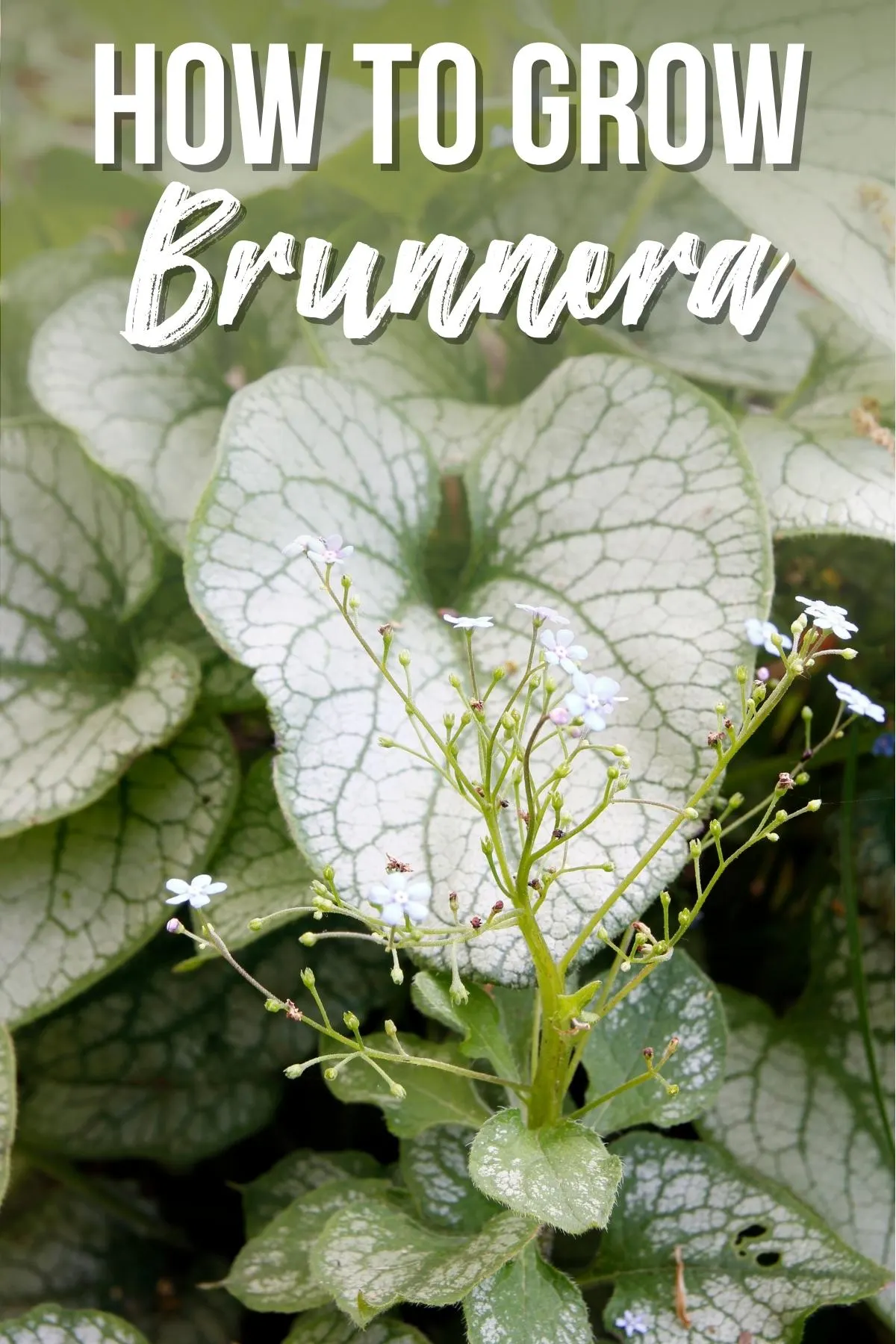
Brunnera is a beautiful flowering perennial that is native to woodland areas in Eastern Europe. Known for its delicate blue flowers and heart-shaped leaves, this plant is a popular choice for gardeners looking to add color and texture to their landscapes.
Growing Brunnera from Seeds

If you want to grow Brunnera from seeds, you can start by collecting the seeds from mature plants in the fall. The seeds are small and black, and they can be sown directly into the ground in the spring after the danger of frost has passed.
Prepare the planting area by removing any weeds and loosening the soil. Sow the seeds thinly and lightly cover them with a thin layer of soil. Keep the soil moist but not soggy, and germination should occur within two to three weeks.
Types of Brunnera
There are several different types of Brunnera available, each with its own unique characteristics:
- Brunnera macrophylla: This is the most common type of Brunnera and is known for its heart-shaped leaves and blue flowers. It grows to a height of about 12-18 inches and can spread up to 24 inches.
- Brunnera macrophylla “Jack Frost”: This variety has silver variegated leaves with green veins, making it a striking addition to any garden. It has the same height and spread as the regular Brunnera macrophylla.
- Brunnera macrophylla “Variegata”: This variety has green leaves with creamy white margins, creating a beautiful contrast. It also has the same height and spread as the regular Brunnera macrophylla.
Popular Varieties
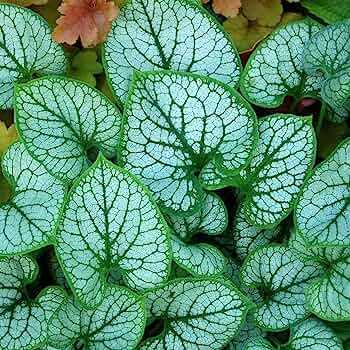
Some popular varieties of Brunnera include:
- Brunnera macrophylla “Silver Heart”: This variety has large heart-shaped leaves with silver markings and blue flowers.
- Brunnera macrophylla “Sea Heart”: This variety has large heart-shaped leaves with silver markings and pale blue flowers.
- Brunnera macrophylla “Emerald Mist”: This variety has green leaves with silver markings and blue flowers.
Conclusion
Whether you choose to grow Brunnera from seeds or purchase established plants, this perennial will surely add beauty and charm to your garden. With its delicate blue flowers and heart-shaped leaves, Brunnera is a must-have for any plant enthusiast.
Choosing the Right Seeds
The first step in growing Brunnera from seeds is to choose the right variety. There are several different types of Brunnera plants, each with its own unique characteristics. Here are some factors to consider when selecting seeds:
Growth Habit
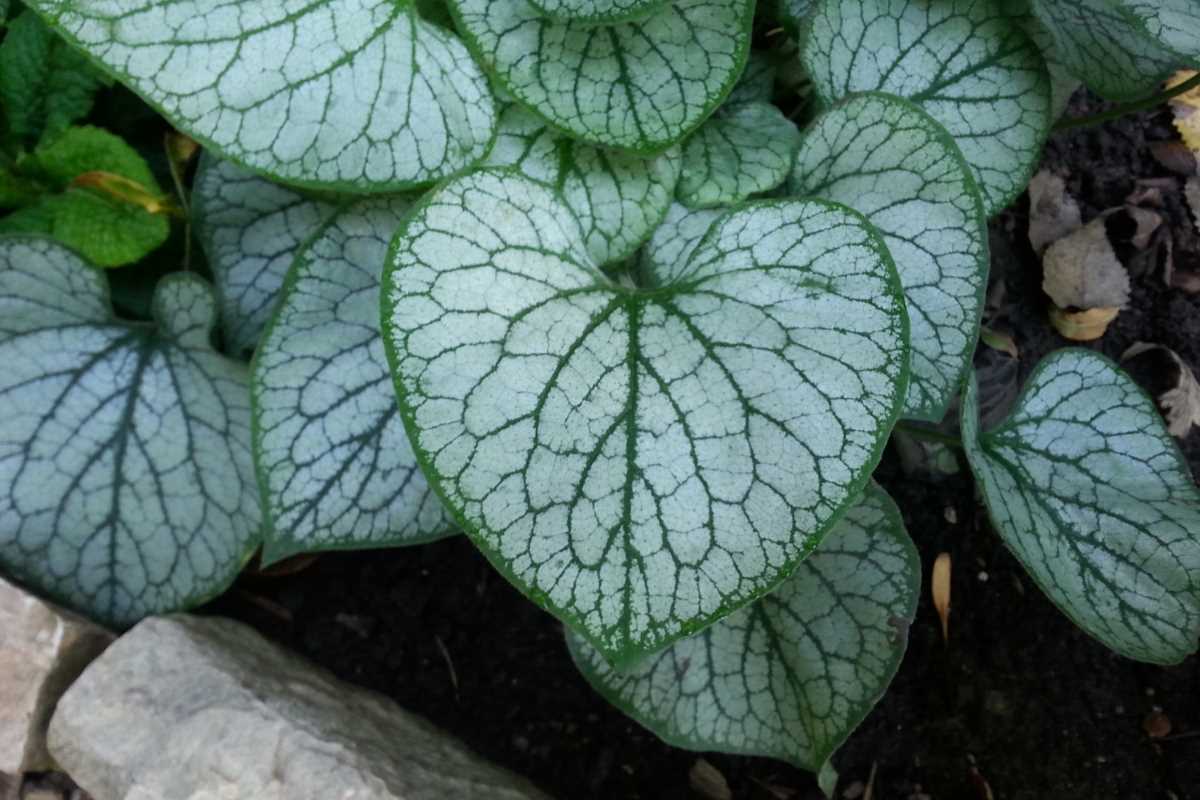
Some varieties of Brunnera have a clumping growth habit, while others spread more aggressively. Consider the space you have available in your garden and choose a variety that will fit well.
Leaf Color
Brunnera plants come in a range of leaf colors, from silver to green. Decide what color scheme you want for your garden and choose a variety that will complement it.
Flower Type
Brunnera plants produce small, delicate flowers in shades of blue, pink, or white. Consider the color that will work best with your garden’s overall design and choose a variety accordingly.
Hardiness Zone
Check the hardiness zone for the variety you’re considering to ensure it will thrive in your specific climate. Brunnera plants are typically hardy in zones 3-8, but some varieties may be more cold or heat tolerant.
Seed Source
When purchasing Brunnera seeds, choose a reputable seed source to ensure the highest quality and viability. Look for seeds that have been properly stored and packaged, preferably from a trusted supplier.
Germination Time
Consider the length of time it takes for the seeds to germinate. Some varieties of Brunnera may take longer than others to sprout, so be prepared to wait patiently for your plants to emerge.
Overall Care Requirements
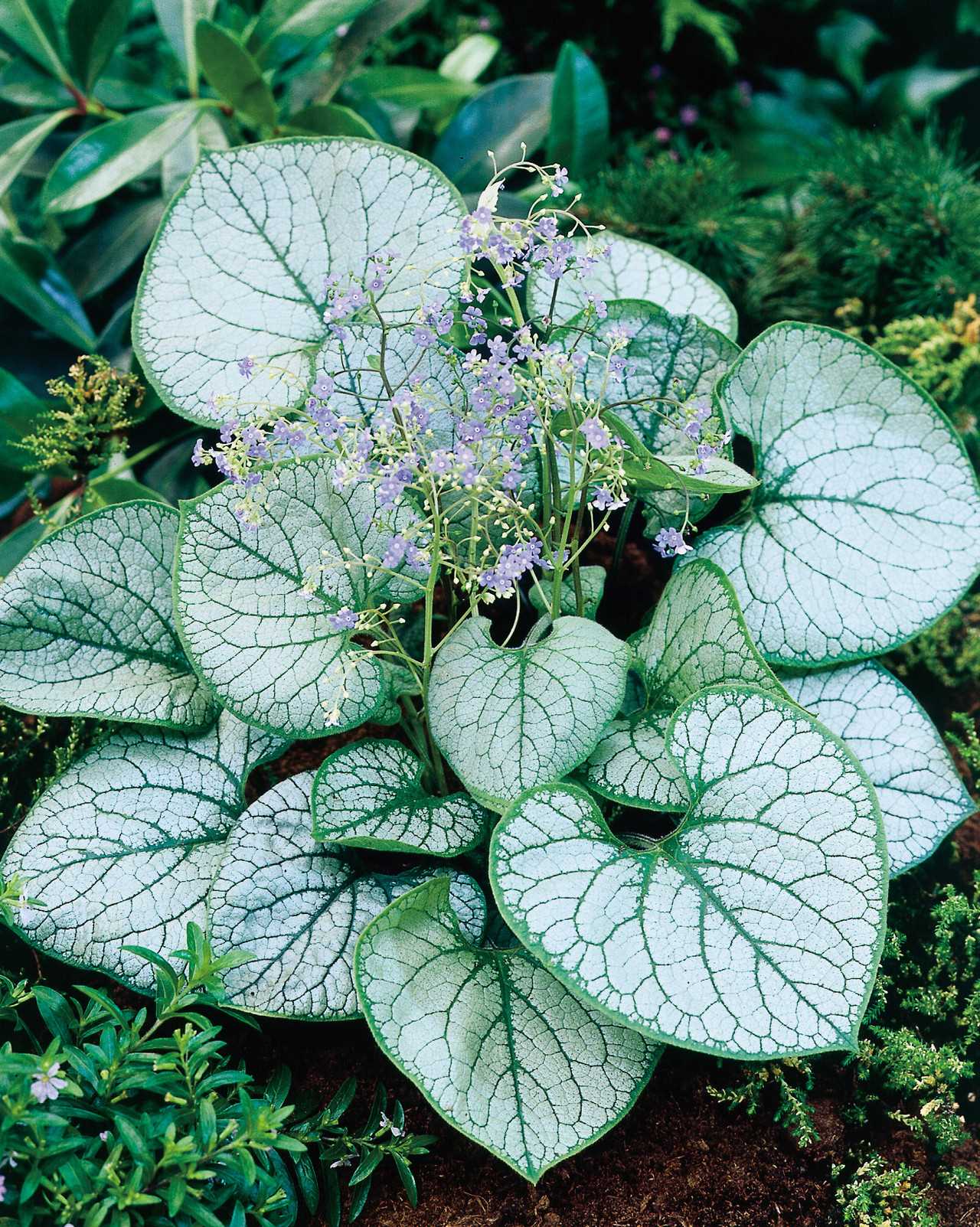
Research the care requirements for the variety you’re considering to ensure it aligns with your gardening skills and preferences. Some varieties may require more maintenance or specific growing conditions than others.
By considering these factors when choosing Brunnera seeds, you can select the right variety for your garden and set yourself up for success in growing these beautiful plants from seed.
Planting and Propagating Brunnera
Planting Brunnera
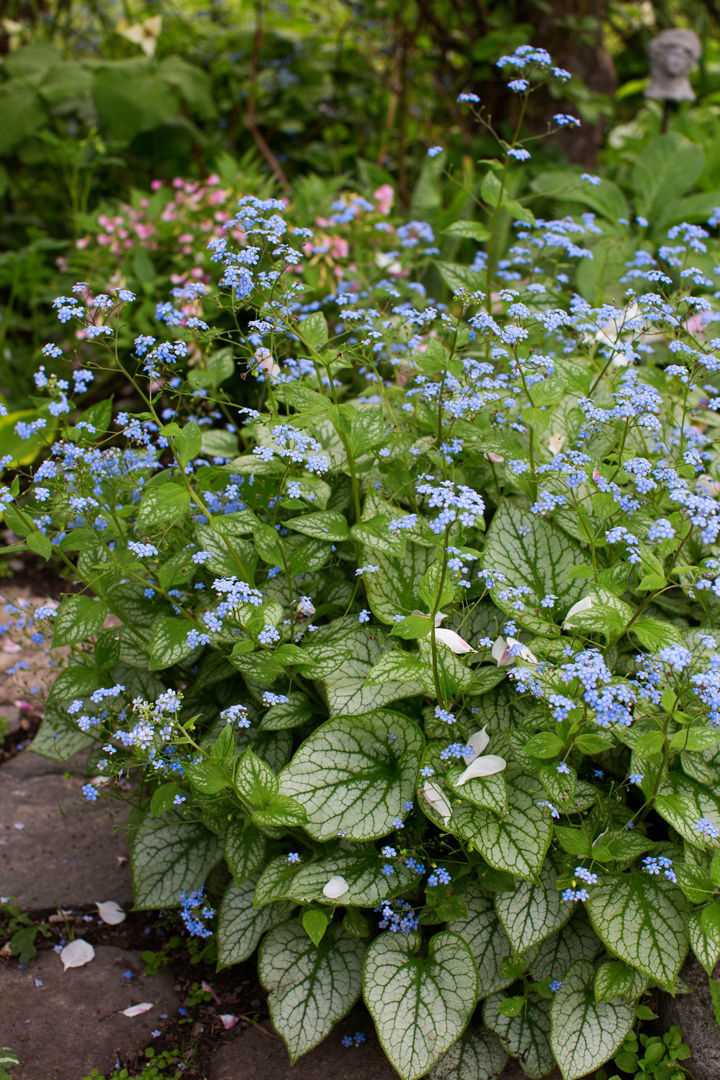
When planting Brunnera, it’s important to choose a location that receives partial to full shade. Brunnera prefers moist, well-drained soil and does best in cooler climates. Prepare the planting area by removing any weeds and loosening the soil. Add organic matter, such as compost, to improve drainage and fertility.
Dig a hole that is slightly larger than the root ball of the plant. Place the Brunnera in the hole, ensuring that the soil level around the plant is the same as the surrounding soil. Gently backfill the hole with soil, firming it gently around the roots.
Water the newly planted Brunnera thoroughly to settle the soil and remove any air pockets. Water regularly, keeping the soil evenly moist but not waterlogged.
Propagating Brunnera
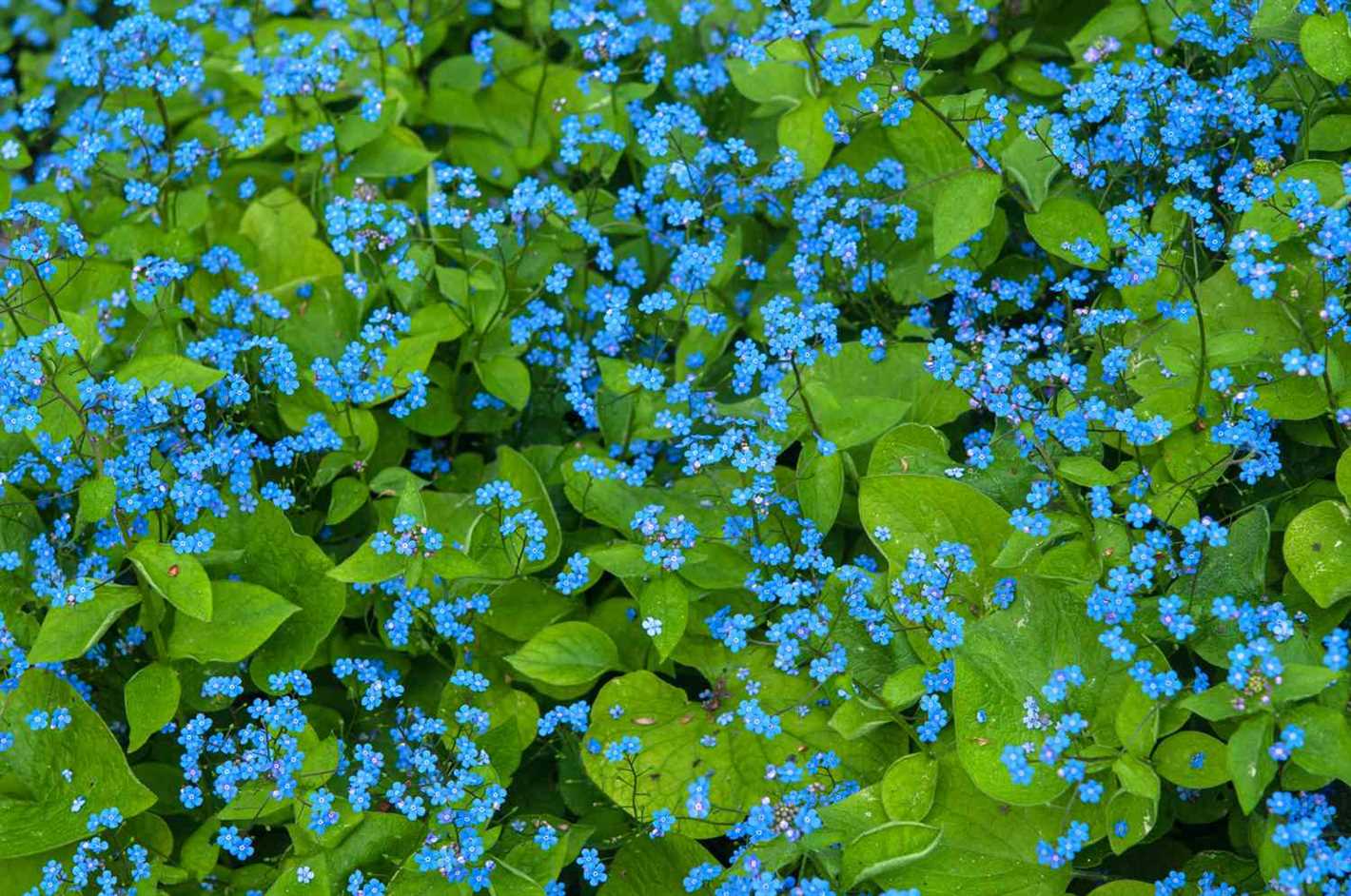
Brunnera can be propagated through division or from seed.
To divide Brunnera, carefully dig up the plant in early spring or early fall. Use a sharp, clean knife or spade to divide the root ball into smaller sections. Each section should have several healthy shoots and roots. Replant the divisions at the same depth they were previously growing, ensuring that the soil is well-drained and the location receives partial to full shade.
To propagate Brunnera from seed, collect ripe seeds from the plant in late summer to early fall. Sow the seeds in containers filled with a well-draining seed starting mix. Keep the soil consistently moist and provide the seedlings with bright, indirect light. Transplant the seedlings into larger pots or into the garden once they have grown a few true leaves.
Overall, planting and propagating Brunnera is a straightforward process that can be done by gardeners of all skill levels. With the right conditions and care, Brunnera can provide beautiful foliage and delicate flowers in your garden.
Brunnera: Care and Maintenance
Watering
Brunnera plants require consistently moist soil but should not be overly saturated. Water the plants deeply once a week or as needed to keep the soil evenly moist. Avoid watering overhead to prevent foliage diseases.
Soil and Fertilizer
Brunnera thrives in rich, well-draining soil. Amend the soil with organic matter before planting to improve its fertility and drainage. Apply a balanced, slow-release fertilizer in early spring to promote healthy growth and blooming.
Light and Temperature
Brunnera prefers partial to full shade conditions, especially during the hottest hours of the day. It can tolerate some morning sun but should be protected from intense afternoon sunlight. The plants are cold hardy and can withstand temperatures as low as -30°F (-34°C).
Pruning
Remove any damaged or yellowing leaves as they appear to maintain the plant’s overall appearance. Cut back the foliage to the ground in late fall or early spring before new growth emerges. This will help rejuvenate the plant and promote healthy growth.
Pest and Disease Control
Brunnera is generally resistant to pests and diseases. However, it can occasionally suffer from slug damage. Apply an organic slug control product or use beer traps to keep slug populations in check.
Propagation
Brunnera can be propagated by division in early spring or fall. Carefully dig up the plant and separate the clumps, ensuring each division has a portion of roots and foliage. Replant the divisions at the same depth as the original plant and water thoroughly.
Winter Care
In areas with harsh winters, adding a layer of mulch around the base of the plants can help protect the roots from freezing temperatures. Remove the mulch in early spring to allow new growth to emerge.
Companion Plants
Brunnera pairs well with other shade-loving plants such as hostas, ferns, and lungwort. These plants complement each other in terms of foliage texture and color and create a visually appealing shade garden.
| Light | Water | Soil | Temperature | Pruning |
|---|---|---|---|---|
| Partial to full shade | Consistently moist | Rich, well-draining | Cold hardy | Trim back in late fall or early spring |
| Pest and Disease | Propagation | Winter Care | Companion Plants | |
| Slug control may be needed | Division in spring or fall | Add mulch for protection | Hostas, ferns, lungwort |
Popular Types and Varieties of Brunnera
- 1. Brunnera macrophylla ‘Jack Frost’: This is one of the most popular varieties of Brunnera. It has heart-shaped silver leaves with green veins, creating a beautiful contrast. It produces clusters of tiny blue flowers in the spring.
- 2. Brunnera macrophylla ‘Looking Glass’: This variety has stunning, highly reflective silver leaves. The leaves are a bit smaller than those of ‘Jack Frost’, but they still create an eye-catching display. It also produces blue flowers in the spring.
- 3. Brunnera macrophylla ‘Silver Heart’: This variety is similar to ‘Jack Frost’ but with larger leaves that have a slightly different shape. The leaves are silver with prominent green veins. It also produces blue flowers in the spring.
- 4. Brunnera macrophylla ‘Sea Heart’: This variety has distinctive heart-shaped leaves that are green with silver accents. The silver coloration intensifies with age, creating a unique appearance. It also produces clusters of blue flowers in the spring.
- 5. Brunnera macrophylla ‘Mr. Morse’: This variety has striking silver leaves that are heavily dotted with green spots. It creates a more speckled look compared to other varieties. It also produces blue flowers in the spring.
Note: These are just a few examples of popular types and varieties of Brunnera. There are many more cultivars available, each with its own unique characteristics and appearances. When choosing a variety, consider factors such as leaf color, size, and flower appearance to create a stunning display in your garden.
Uses for Brunnera in the Garden
Brunnera is a versatile plant that can be used in various ways to enhance the beauty of your garden. Here are some popular uses for Brunnera:
- Ground cover: Brunnera can be used as a ground cover to fill in empty spaces in your garden and create a dense, carpet-like effect. Its thick foliage helps suppress weed growth and provides a vibrant green backdrop for other plants.
- Understory planting: With its shade tolerance, Brunnera is an excellent choice for planting under taller trees or shrubs. It adds interest and texture to the understory, creating a layered look in your garden.
- Border plant: Brunnera’s attractive foliage and delicate flowers make it a perfect border plant. You can use it to define the edges of garden beds or along paths and walkways.
- Container plant: Brunnera can be grown in containers and pots, allowing you to enjoy its beauty on patios, balconies, or any small space. Choose compact or dwarf varieties for best results.
- Cut flower: Brunnera flowers can be cut and used in floral arrangements. Their dainty blue or white blooms add a touch of elegance and freshness to bouquets.
- Focal point: Some larger varieties of Brunnera, such as ‘Jack Frost’, can be used as focal points in the garden. Plant them in prominent locations to draw attention and create visual interest.
Whether you’re looking for a versatile ground cover, an attractive border plant, or a beautiful addition to your flower arrangements, Brunnera has a place in your garden. Experiment with different varieties and uses to find the perfect fit for your space.
Common Pests and Diseases of Brunnera
Brunnera plants are generally considered to be low-maintenance and relatively resistant to pests and diseases. However, like any plant, they can still be susceptible to certain issues. Here are some common pests and diseases that can affect Brunnera:
Pests
- Aphids: These small insects can be found feeding on the leaves and stems of Brunnera plants. They can cause damage by sucking sap from the plant, leading to distorted growth and yellowing leaves. Control aphids by using insecticidal soap or horticultural oil.
- Slugs and snails: These mollusks are notorious for feeding on the leaves of many garden plants, and Brunnera is no exception. They can leave behind large holes and damage the foliage. Control slugs and snails by using organic slug baits or creating physical barriers around the plants.
- Spider mites: These tiny pests can be difficult to see with the naked eye, but they can cause significant damage to the leaves of Brunnera plants. They create fine webbing and feed on the underside of leaves, causing discoloration and bronzing. Control spider mites by washing the leaves and using insecticidal soap.
Diseases
- Powdery mildew: This fungal disease can affect Brunnera plants, especially in conditions of high humidity and poor air circulation. It appears as a powdery white coating on the leaves, stems, and flowers. Control powdery mildew by improving air circulation and applying fungicides if necessary.
- Crown rot: This disease is caused by overly wet soil and can lead to the decay of the plant’s crown and roots. Symptoms include wilting, yellowing leaves, and plant death. Control crown rot by ensuring well-drained soil and avoiding overwatering.
- Leaf spot: Leaf spot diseases can affect Brunnera and cause small, circular lesions on the leaves. These lesions can be brown, black, or reddish in color. Control leaf spot by avoiding overhead watering and applying fungicides if necessary.
Regularly inspecting your Brunnera plants for signs of pests and diseases will help you catch any issues early on and take appropriate measures to prevent them from spreading. Good cultural practices, such as proper watering, fertilizing, and providing adequate sunlight, can also help keep your Brunnera plants healthy and less susceptible to pests and diseases.
Frequently Asked Questions about Brunnera
1. What is Brunnera?
Brunnera is a genus of flowering plants in the family Boraginaceae. It is native to Eastern Europe and Western Asia. The most popular species is Brunnera macrophylla, also known as Siberian bugloss or heartleaf brunnera.
2. What are the different types of Brunnera?
There are several different types of Brunnera, but the most common is Brunnera macrophylla. The cultivars of Brunnera macrophylla vary in leaf size, shape, and color. Some popular cultivars include ‘Jack Frost’, ‘Silver Heart’, and ‘Looking Glass’.
3. How do you grow Brunnera from seeds?
To grow Brunnera from seeds, start by sowing the seeds indoors in early spring. Use a well-draining seed-starting mix and lightly cover the seeds with a thin layer of soil. Keep the soil moist but not waterlogged. Germination may take 2-3 weeks. Once the seedlings are large enough, transplant them into individual pots or the garden.
4. Can Brunnera grow in shade?
Yes, Brunnera is a shade-loving plant and thrives in partial to full shade. It can also tolerate some morning sun, but too much direct sunlight can scorch its leaves. In hotter climates, it is best to provide some protection from the afternoon sun.
5. How often should I water my Brunnera?
Brunnera prefers consistently moist soil but not waterlogged conditions. Water the plants regularly, especially during dry periods. It is a good idea to mulch around the plants to help retain moisture in the soil.
6. How do you propagate Brunnera?
Brunnera can be propagated by division or by taking root cuttings. To divide the plant, dig up the clump in spring or fall and carefully separate the individual crowns. Replant the divisions in well-prepared soil. To take root cuttings, remove a section of root with a bud and plant it in a container filled with potting soil. Keep the soil moist until the new plantlets develop.
7. Can Brunnera be grown in containers?
Yes, Brunnera can be grown in containers as long as the containers provide enough space for the plants to grow. Ensure that the containers have drainage holes to prevent waterlogging. Use a well-draining potting mix and water the plants regularly to keep the soil moist.
8. Does Brunnera attract pollinators?
Yes, Brunnera flowers are attractive to bees, butterflies, and other pollinators. Their nectar-rich flowers provide a valuable food source for these beneficial insects. Planting Brunnera in your garden can help support pollinators and promote biodiversity.
9. Is Brunnera deer-resistant?
Brunnera is considered moderately deer-resistant. While deer may occasionally browse on the leaves, they usually avoid the plant due to its toxicity. However, it is always wise to monitor deer activity in your area and take additional measures to protect your plants if necessary.
10. How long does Brunnera bloom?
Brunnera typically blooms in late spring or early summer, producing clusters of small, forget-me-not-like flowers. The blooms last for several weeks, adding a splash of color to the garden. Once the flowers fade, the attractive heart-shaped foliage continues to provide visual interest throughout the growing season.
Questions and Answers:
What is Brunnera?
Brunnera is a perennial plant that is native to regions of Europe and Asia. It is commonly grown for its attractive foliage and delicate blue flowers.
What are the different types of Brunnera?
There are several different types of Brunnera, including Brunnera macrophylla, Brunnera macrophylla ‘Jack Frost’, and Brunnera macrophylla ‘Silver Heart’.
How do you grow Brunnera from seeds?
To grow Brunnera from seeds, start by planting the seeds in a seed tray filled with compost. Cover the seeds lightly with compost and water them gently. Place the tray in a warm location and keep the soil moist. The seeds should germinate in about 2-3 weeks. Once the seedlings are large enough, transplant them into individual pots and grow them until they are ready to be planted in the garden.
What are the best conditions for growing Brunnera?
Brunnera prefers partial shade to full shade and moist, well-drained soil. It can tolerate a wide range of soil types, but performs best in fertile, humus-rich soil.
How tall does Brunnera grow?
Brunnera typically grows to a height of about 12-18 inches, with a spread of 18-24 inches.
When do Brunnera plants bloom?
Brunnera plants bloom in early spring, usually in April or May. They produce clusters of delicate blue flowers that stand out against the plant’s attractive foliage.







